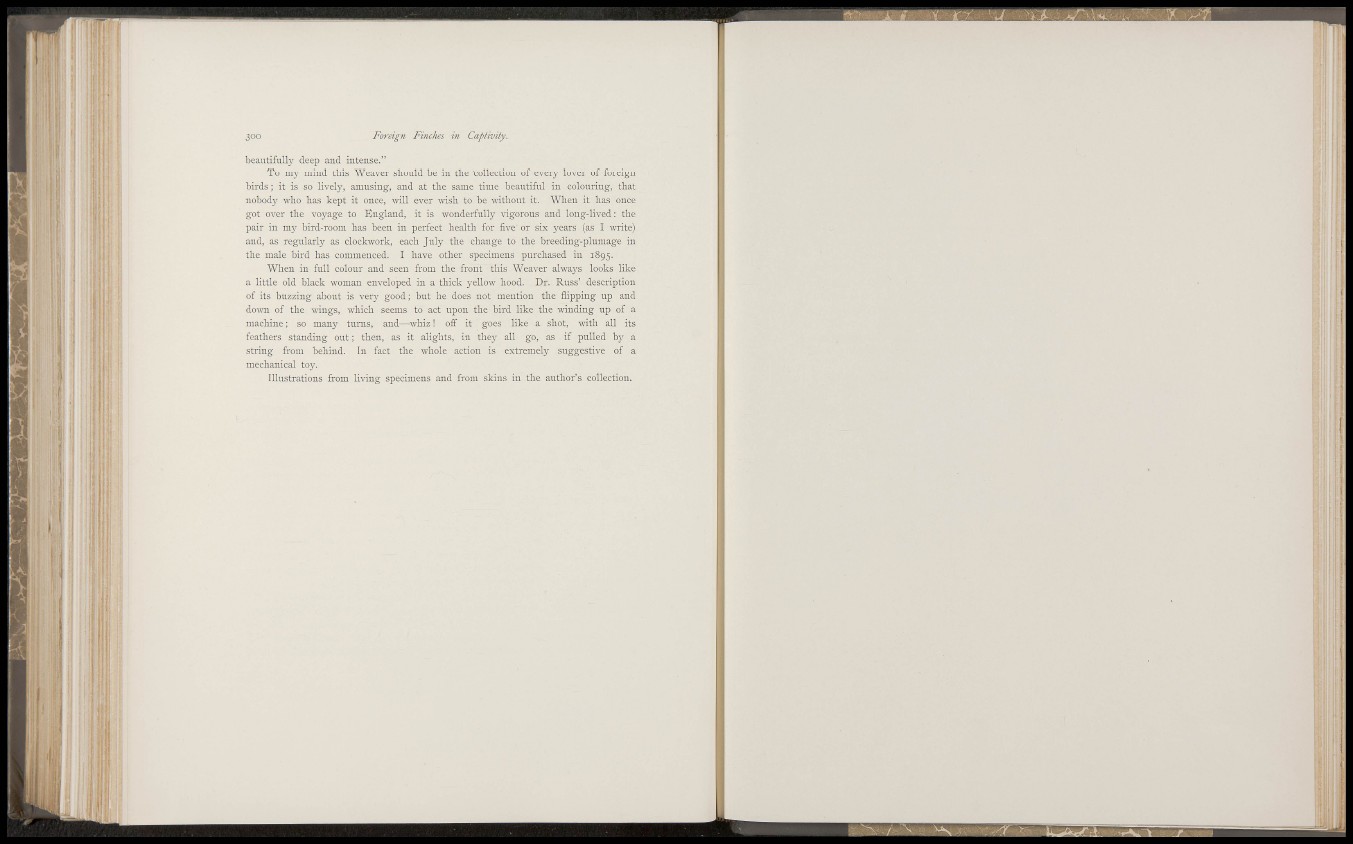
300 Foreign Finches, in Captivity.
beautifully deep and intense."
To my mind this Weaver should be in the 'collection of everj' lover of foreign
birds ; it is so lively, amusing, and at the same time beautiful in colouring, that
nobody who has kept it once, will ever wish to be without it. Wheu it has once
got over the voyage to England, it is wonderfully vigorous and long-lived: the
pair in my bird-room has been in perfect health for five' or six years (as I write)
and, as regularly as clockwork, each July the change to the breeding-plumage in
the male bird has commenced. I have other specimens purchased in 1895.
When in full colour and seen from the front this Weaver always looks like
a little old black woman enveloped in a thick yellow hood. Dr. Russ' description
of its buzzing about is very good; but he does not mention the flipping up and
down of the wings, which seems to act upon the bird like the winding up of a
machine; so many turns, and—whiz! off it goes like a shot, with all its
feathers standing out; then, as it alights, in the}? all go, as if pulled b)' a
string from behind. In fact the whole action is extremely suggestive of a
mechanical toy.
Illustrations from living specimens and from skins in the author's collection.
¡ S